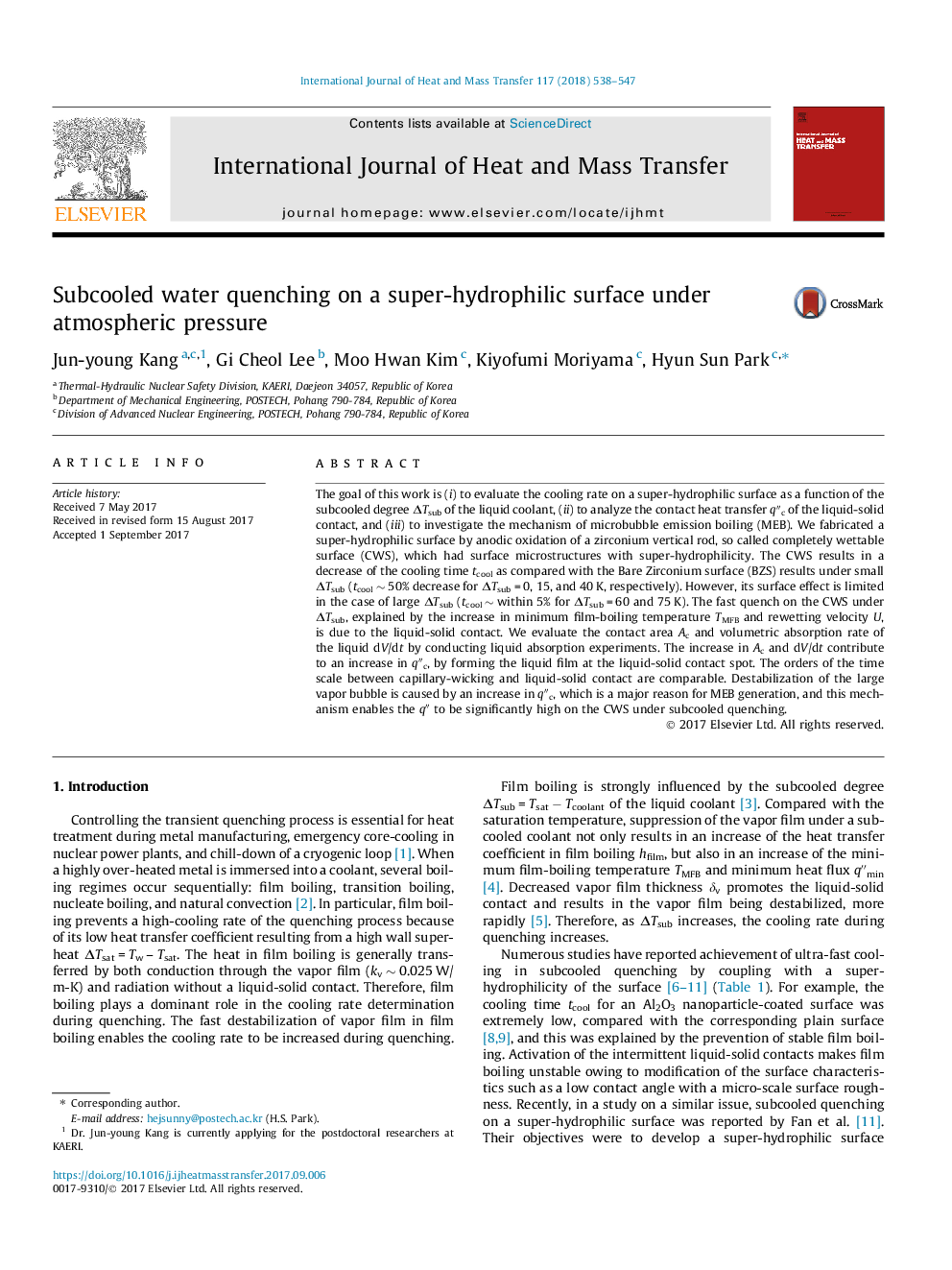| Article ID | Journal | Published Year | Pages | File Type |
|---|---|---|---|---|
| 4993422 | International Journal of Heat and Mass Transfer | 2018 | 10 Pages |
Abstract
The goal of this work is (i) to evaluate the cooling rate on a super-hydrophilic surface as a function of the subcooled degree ÎTsub of the liquid coolant, (ii) to analyze the contact heat transfer qâ³c of the liquid-solid contact, and (iii) to investigate the mechanism of microbubble emission boiling (MEB). We fabricated a super-hydrophilic surface by anodic oxidation of a zirconium vertical rod, so called completely wettable surface (CWS), which had surface microstructures with super-hydrophilicity. The CWS results in a decrease of the cooling time tcool as compared with the Bare Zirconium surface (BZS) results under small ÎTsub (tcool â¼Â 50% decrease for ÎTsub = 0, 15, and 40 K, respectively). However, its surface effect is limited in the case of large ÎTsub (tcool â¼Â within 5% for ÎTsub = 60 and 75 K). The fast quench on the CWS under ÎTsub, explained by the increase in minimum film-boiling temperature TMFB and rewetting velocity U, is due to the liquid-solid contact. We evaluate the contact area Ac and volumetric absorption rate of the liquid dV/dt by conducting liquid absorption experiments. The increase in Ac and dV/dt contribute to an increase in qâ³c, by forming the liquid film at the liquid-solid contact spot. The orders of the time scale between capillary-wicking and liquid-solid contact are comparable. Destabilization of the large vapor bubble is caused by an increase in qâ³c, which is a major reason for MEB generation, and this mechanism enables the qâ³ to be significantly high on the CWS under subcooled quenching.
Related Topics
Physical Sciences and Engineering
Chemical Engineering
Fluid Flow and Transfer Processes
Authors
Jun-young Kang, Gi Cheol Lee, Moo Hwan Kim, Kiyofumi Moriyama, Hyun Sun Park,
